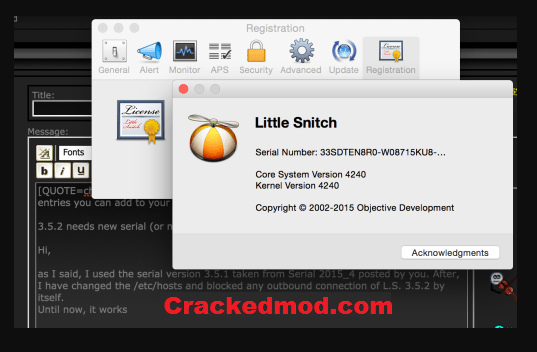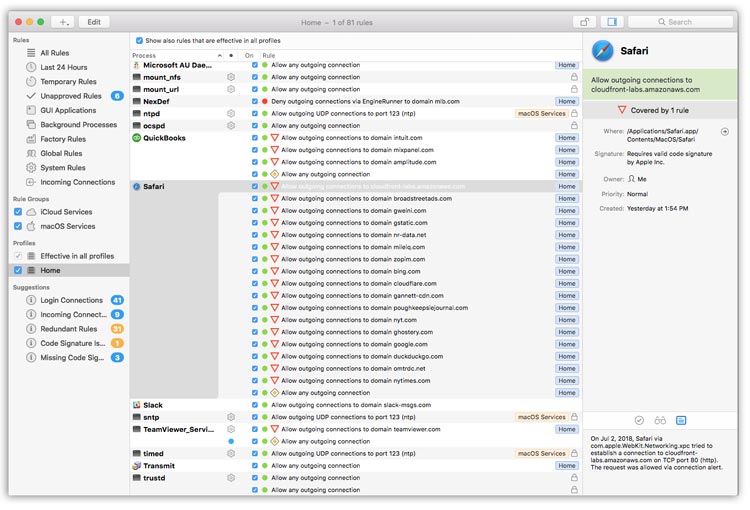



For instance, launch Google Chrome, and Little Snitch warns you that the browser is attempting to connect to (to check for updates, ostensibly). Little Snitch 4: Watching for chatty appsAs in, Little Snitch’s most obvious use is in alerting you to the network activity of applications and low-level software. It was only in version 3 that it added inbound connection management, too, which made it much more useful against attacks. Enabling it likely causes more problems and confusion for less-experienced users than leaving it off, but a Mac with unfettered bidirectional access isn’t a good thing, either.That’s why I’ve recommended Little Snitch since version 1, because it lets you keep an active but not irritating eye on what your Mac is doing. The firewall option in the Security & Privacy system preference pane is extremely coarse and lacks necessary features. With Little Snitch for Mac, users can prevent personal information from being sent out, although its limited features may not be worth the program's price. But the app has significant updates for visualizing connections and improves how it explains what apps are trying to do.It’s bizarre that this many decades into the net’s evolution, Apple still doesn’t include strong tools enabled by default that restrict access to your Mac or examine connections from macOS or apps you’re running out to the Internet. Version 4 refines and extends this friendly firewall, and if you’ve used it or looked at it in the past, you’ll find it mostly familiar. The Internet is a terrifying place, and Objective Development’s ($45) has tried for many years to help keep your Mac locked down by monitoring connections and letting you control inbound and outbound traffic.


 0 kommentar(er)
0 kommentar(er)
